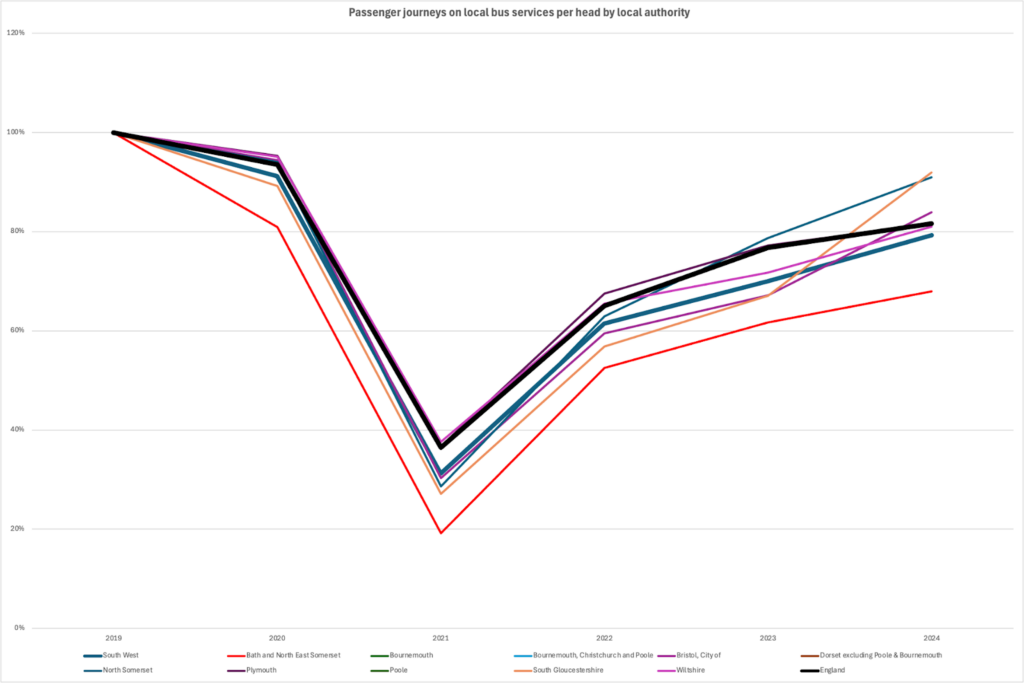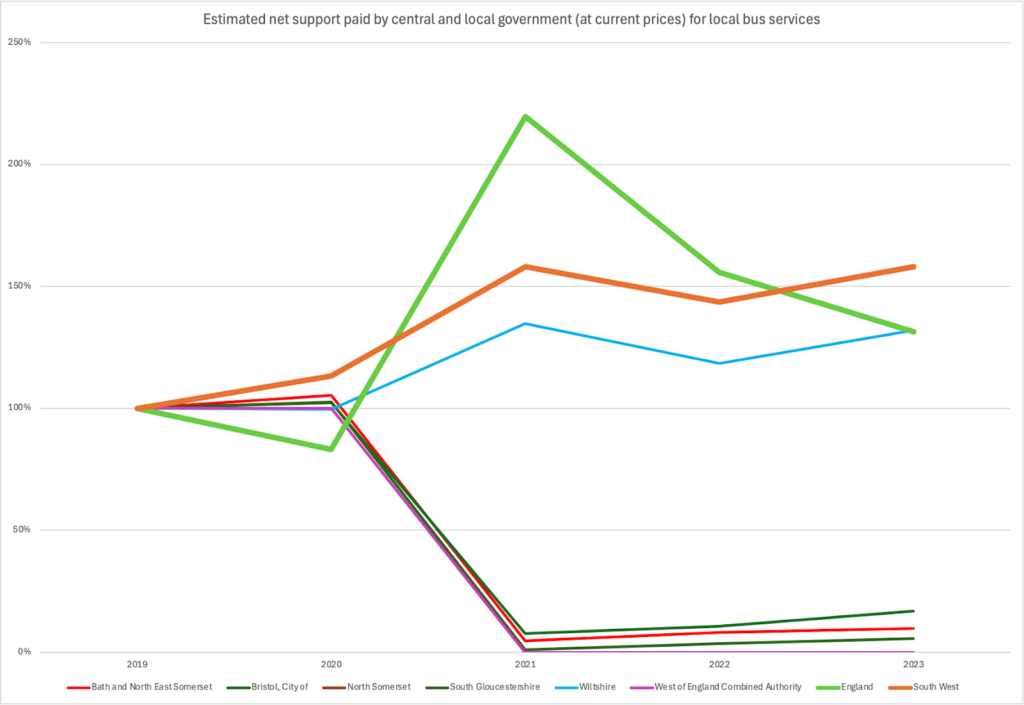The UK government’s latest official bus statistics report has revealed a concerning decline in bus services across Bath and North East Somerset (B&NES). Despite claims of bus ridership growth, B&NES continues to fall behind national and regional averages for bus service frequency and passenger journeys.

The data shows a sharp drop in bus journeys per head across the South West during 2020-2021, with B&NES (represented by the red line) remaining below both national and regional averages. The region has struggled to recover to pre-pandemic ridership levels and continues to lag behind.
While public funding for buses increased post-2020, bus ridership in B&NES has not kept pace, raising concerns about the effectiveness of this funding. The reported increase in local bus journeys (from 8 million in 2021-2022 to 9 million in 2022-2023) contradicts the decline in service frequency, suggesting overcrowding or unmet demand. This trend is evident across the West of England Combined Authority (WECA) region, with South Gloucestershire and Bristol also facing funding shortfalls. This reflects the impact of the Best Value notice, which has hindered the growth and potential of public transport in recent years.

It’s important to note that large cities, including London, continue to heavily subsidise bus services, skewing national data. Rural areas like Wiltshire are also forced to subsidise routes to ensure they exist at all. This disparity further highlights the challenges faced by smaller areas like B&NES, where public transport remains underfunded.
A report from Friends of the Earth further underscores the severity of the issue, revealing a 48% decline in urban bus services and a 52% drop in rural services since 2008. In B&NES, bus service frequency has dropped by 61.4% since 2010, with similar reductions seen across the WECA region:
- B&NES: Down by 61.4% since 2010
- North Somerset: Down by 65.8%
- South Gloucestershire: Down by 47.9%
- Bristol: Down by 40.4%
These reductions have significantly impacted local communities, particularly in rural areas. The Green Group is calling for urgent action to restore and expand bus services across the region. With ridership still lagging, it’s crucial that both the government and local authorities prioritise investment in service frequency and reliability.
Without meaningful improvements in public transport, communities in B&NES will continue to face poor connectivity, undermining the local economy and climate goals.